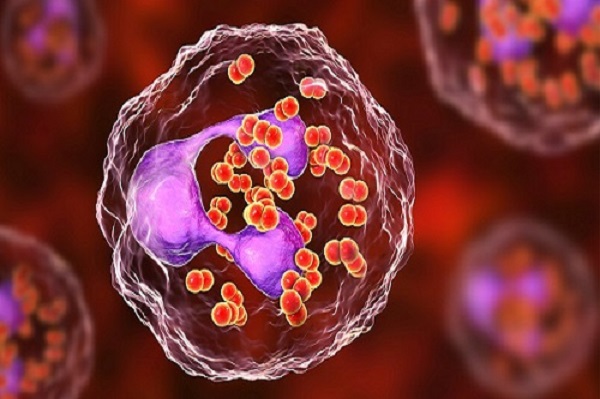The United States has seen a troubling increase in STDs in recent years, posing a significant public health challenge. This surge includes a range of infections, such as chlamydia, gonorrhoea, syphilis, and HIV/AIDS, affecting people of all demographics. Understanding the reasons behind this rise is essential to develop effective prevention strategies and addressing broader public health concerns.
Factors like changing sexual behaviours, disparities in healthcare access, and evolving societal norms contribute to the complexity of STD transmission. This introduction sets the stage for a deeper examination of the causes, consequences, and proactive steps needed to combat the rising prevalence of STDs nationwide.
Several drugs can be used to treat genital herpes. These medications aid in accelerating the cure of ulcers in newly infected individuals or those experiencing recurrent outbreaks. Some people who experience herpes breakouts take medication daily to stop more outbreaks or the disease from spreading to their sexual partners.
Genital herpes infection risk can be reduced in several ways. A latex condom should be used each time a person has sex. It is not advised for someone to have oral, vaginal, or anal sex if they have blisters or ulcers.
Every day, more than 1 million types of curable STDs are registered in various hospitals and clinics, as reported by the World Health Organization (WHO). However, when in-depth research was done,
Overview of STDs in America
Statistics and Trends:
Recent data reveals a troubling increase in STD prevalence and incidence rates across the United States. According to the Centers for Disease Control and Prevention (CDC), over [insert latest statistics here] cases of STDs were reported in [year], marking a [percentage increase] rise from previous years. This upward trend underscores the urgent need for comprehensive public health initiatives aimed at prevention and treatment.
Common Types of STDs:
The most prevalent STDs affecting Americans include:
- Chlamydia: Known for its asymptomatic nature, chlamydia remains the most reported STD nationwide.
- Gonorrhea: Cases of gonorrhea have seen a resurgence, with increasing antibiotic resistance posing challenges to treatment.
- Syphilis: Both primary and secondary syphilis cases have risen, particularly among men who have sex with men.
- HIV/AIDS: Despite advancements in treatment, HIV/AIDS continues to impact communities across the country.
Demographic Patterns:
Certain demographic groups are disproportionately affected by STDs:
- Young Adults: Individuals aged 15-24 years exhibit higher rates of chlamydia and gonorrhea.
- Men who have sex with men (MSM): MSM face elevated risks of syphilis and HIV/AIDS transmission.
- Racial and Ethnic Minorities: African American and Hispanic populations experience disparities in STD prevalence due to socioeconomic factors and healthcare access.
Understanding these demographic patterns is crucial for tailoring targeted interventions and addressing health disparities among vulnerable populations. This section provides a comprehensive overview of the current landscape of STDs in America, highlighting the need for proactive public health strategies to mitigate their impact.
Factors Contributing to the Surge
Behavioural Factors: Changing sexual behaviours and practices have significantly contributed to the surge in STDs. Factors include:
- Decreased Condom Use: Shifts in attitudes towards condom use and safer sex practices.
- Increased Sexual Activity: Rising rates of multiple sexual partners and casual sex encounters.
- Delayed Age of Marriage: Longer periods of sexual activity before settling into long-term relationships.
These behavioural changes highlight the importance of promoting comprehensive sex education and awareness campaigns to encourage safer sexual practices among individuals of all ages.
Social and Economic Factors:
Socioeconomic status plays a critical role in shaping STD risk and transmission patterns:
- Poverty and Disadvantage: Higher prevalence of STDs in communities facing socioeconomic challenges, including limited access to healthcare and education.
- Stigma and Discrimination: Societal stigma surrounding STDs can deter individuals from seeking timely testing and treatment.
- Access to Resources: There are disparities in access to healthcare services, including sexual health clinics and STD testing facilities.
Addressing social and economic factors requires a multi-faceted approach that includes improving healthcare access, reducing stigma, and addressing broader social determinants of health.
Read more: The Art of Sharing: Discussing STDs with Partners
Healthcare Access:
Access to healthcare services significantly impacts STD prevention and treatment outcomes:
- Barriers to Care: Geographic barriers, cost of services, and lack of insurance coverage can limit access to STD testing and treatment.
- Preventive Services: Availability of comprehensive sexual health services, including routine STD screening and counselling.
- Treatment Accessibility: Access to affordable and effective treatments for STDs, including medications and follow-up care.
Enhancing healthcare access involves expanding access to sexual health services, implementing telehealth options, and promoting STD screening initiatives in diverse community settings.
Understanding these factors is essential for developing targeted interventions and policies aimed at reducing the incidence of STDs and promoting overall sexual health across diverse populations.
Public Health Implications
Health Risks: Untreated STDs pose significant health risks and potential complications:
- Pelvic Inflammatory Disease (PID): Complication of untreated chlamydia and gonorrhoea, leading to infertility and chronic pelvic pain.
- Cervical Cancer: Human papillomavirus (HPV) infection increases the risk of cervical cancer in women.
- Neurological Effects: Syphilis can progress to neurosyphilis, causing neurological damage if left untreated.
- HIV/AIDS Progression: Untreated HIV infection can lead to AIDS, compromising the immune system and increasing susceptibility to opportunistic infections.
Early diagnosis and treatment are crucial to mitigating these health risks and preventing long-term complications associated with STDs.
Economic Burden:
The economic impact of STDs extends beyond individual healthcare costs:
- Direct Medical Costs: Expenses related to STD testing, treatment, and follow-up care.
- Indirect Costs: Lost productivity due to illness, reduced workforce participation, and disability.
- Social Costs: Impact on quality of life, stigma-related discrimination, and psychological distress.
Addressing the economic burden of STDs requires investment in prevention efforts, healthcare infrastructure, and supportive services to mitigate long-term societal costs.
Challenges in Prevention:
Barriers hinder effective STD prevention programs and interventions:
- Lack of Awareness: Limited understanding of STD risks and preventive measures among at-risk populations.
- Stigma and Shame: Fear of stigma and discrimination may deter individuals from seeking testing and treatment.
- Resource Constraints: Funding limitations for public health initiatives, including STD screening and education campaigns.
Overcoming these challenges necessitates comprehensive approaches that prioritize education, destigmatization, and equitable access to sexual health services.
Understanding the public health implications of STDs underscores the importance of proactive measures to reduce transmission, improve health outcomes, and alleviate the economic and social burdens associated with these infections.
Strategies for STD Prevention and Control
Education and Awareness: Comprehensive sex education and awareness campaigns are essential for promoting safe sexual practices:
- School-Based Programs: Incorporating age-appropriate sex education curriculum in schools to educate students about STD prevention, contraception, and consent.
- Community Outreach: Engaging community organizations, healthcare providers, and media platforms to disseminate accurate information about STDs and promote healthy behaviours.
- Digital Platforms: Utilizing online resources and social media to reach diverse audiences with educational content on STD prevention and sexual health.
Empowering individuals with knowledge enhances awareness, encourages responsible behaviour, and reduces the stigma associated with STDs.
Screening and Testing:
Regular STD testing and early detection are critical for controlling the spread of infections:
- Routine Screening: Implementing guidelines for routine STD screening based on age, sexual activity, and risk factors.
- Accessible Testing Services: Increasing availability of low-cost or free STD testing at community health centres, clinics, and mobile outreach units.
- Partner Notification: Encouraging individuals diagnosed with an STD to notify their sexual partners for prompt testing and treatment.
Early diagnosis allows for timely intervention, reduces transmission rates, and supports better health outcomes for individuals and communities.
Treatment and Care:
Access to affordable treatment options and supportive healthcare services is vital for managing STDs:
- Antibiotic Therapy: Providing effective antibiotics for bacterial STDs like chlamydia, gonorrhoea, and syphilis.
- Antiviral Therapy: Offering antiviral medications for viral STDs such as herpes and HIV/AIDS.
- Continuum of Care: Ensuring access to comprehensive healthcare services, including counselling, follow-up care, and partner services.
- Supportive Services: Addressing psychosocial needs, stigma reduction, and promoting adherence to treatment regimens.
Equity in healthcare access and culturally competent care are crucial for improving health outcomes and addressing disparities in STD prevalence.
Collaboration among healthcare providers, policymakers, community leaders, and affected individuals is essential to implement these strategies. Prioritizing prevention, early detection through testing, and comprehensive care can significantly alleviate the impact of STDs on communities. These efforts aim to enhance sexual health, support affected individuals, and foster overall well-being across diverse populations.
Community Responses and Support
Support Networks:
Community organizations and support groups play a crucial role in STD awareness and advocacy:
- Peer Support: Providing a safe space for individuals affected by STDs to share experiences, receive emotional support, and access resources.
- Education and Outreach: Conducting community outreach programs to raise awareness about STD prevention, testing, and treatment options.
- Advocacy Efforts: Collaborating with stakeholders to advocate for policies that prioritize sexual health education, healthcare access, and funding for STD prevention programs.
These support networks empower individuals to navigate the challenges of living with STDs and promote a supportive community environment.
Personal Stories:
Real-life experiences offer insight into the impact of STDs and highlight paths to recovery:
- Narratives of Resilience: Sharing personal journeys of individuals who have overcome stigma, accessed treatment, and maintained healthy relationships.
- Education through Storytelling: Using personal stories to educate the public about the realities of living with STDs, destigmatize the conditions, and encourage empathy and understanding.
- Inspiration for Change: Stories of empowerment and advocacy that inspire others to seek help, prioritize their sexual health, and engage in community efforts to address STD challenges.
By amplifying personal stories, communities can foster empathy, challenge misconceptions, and promote supportive environments for individuals affected by STDs.
Policy Recommendations:
Advocating for policy changes is critical to improving STD prevention and healthcare access:
- Legislative Support: Supporting legislation that funds STD prevention initiatives, expands access to affordable healthcare services and promotes comprehensive sex education.
- Healthcare Reform: Advocating for policies that reduce barriers to STD testing, treatment, and preventive care, particularly for underserved populations.
- Community Engagement: Engaging policymakers, healthcare providers, and community leaders in collaborative efforts to address systemic challenges and promote sexual health equity.
Policy advocacy focuses on systemic changes to bolster STD prevention efforts, improve healthcare access, and lessen disparities in STD outcomes. Community responses play a crucial role in the holistic approach to tackling STDs. Building supportive networks, sharing personal stories, and advocating for policy reforms are vital community actions. These efforts collectively promote sexual health, combat stigma, and enhance the quality of life for those impacted by STDs.
Conclusion
The increase in STDs in America requires urgent action from healthcare professionals, policymakers, and communities. Factors like social behaviours, socioeconomic disparities, and healthcare access gaps contribute to this surge. Proactive measures are essential to protect public health and mitigate the spread of STDs. Comprehensive sex education programs are crucial to educate and empower individuals about STD prevention. Equipping people with knowledge about safe sexual practices and regular testing promotes informed decision-making about sexual health.
Furthermore, enhancing access to affordable and confidential STD testing and treatment services is paramount. Community health centres, clinics, and outreach programs play a vital role in reaching underserved populations and providing essential healthcare services.
Collaboration among healthcare providers, policymakers, and community leaders is crucial for developing evidence-based strategies to prevent and manage STDs.
Priorities include:
- Funding for STD prevention programs.
- Support for sexual health clinics.
- Policies that ensure fair healthcare access.
Addressing the stigma surrounding STDs is vital to creating supportive environments where individuals feel safe seeking testing, treatment, and support. By reducing stigma, we can promote open dialogue and empower individuals to prioritize their sexual health without fear of discrimination.
Read more: The Do’s and Don’ts of Post-Sex Behavior.



